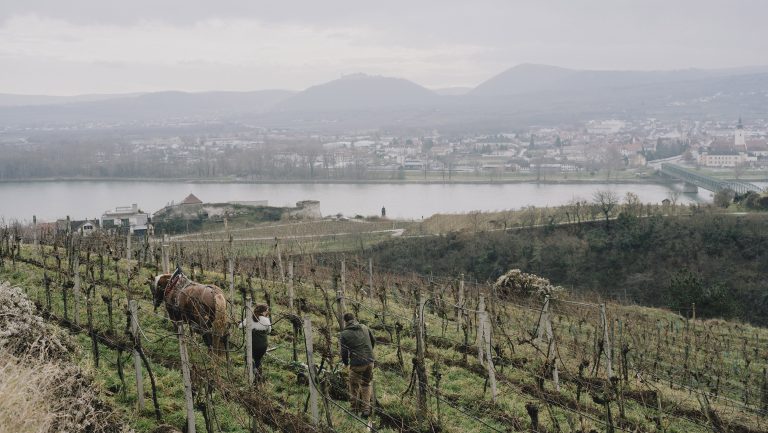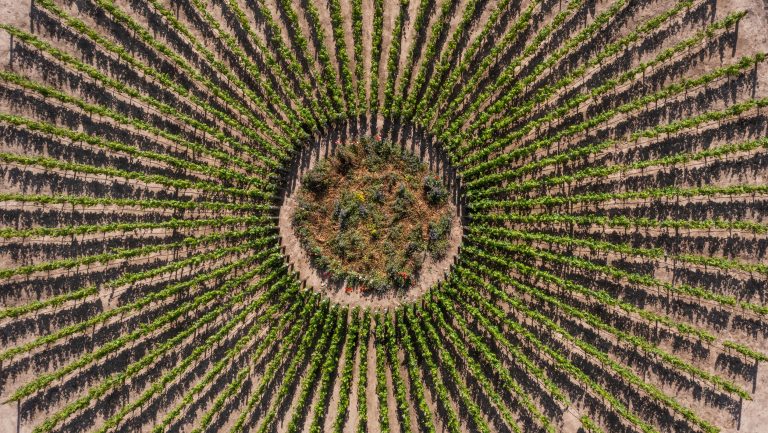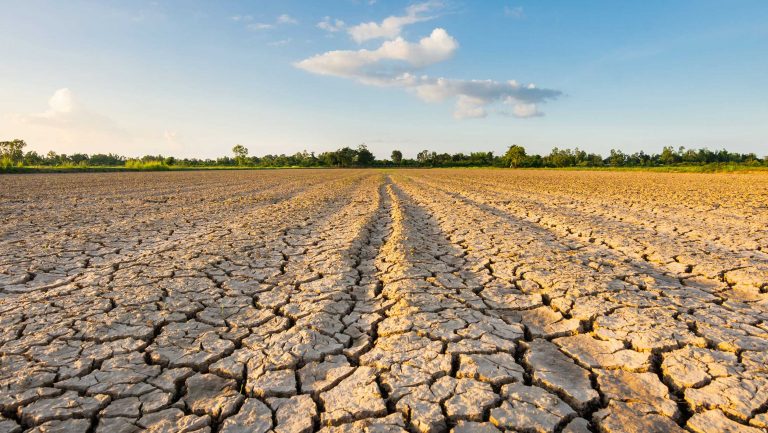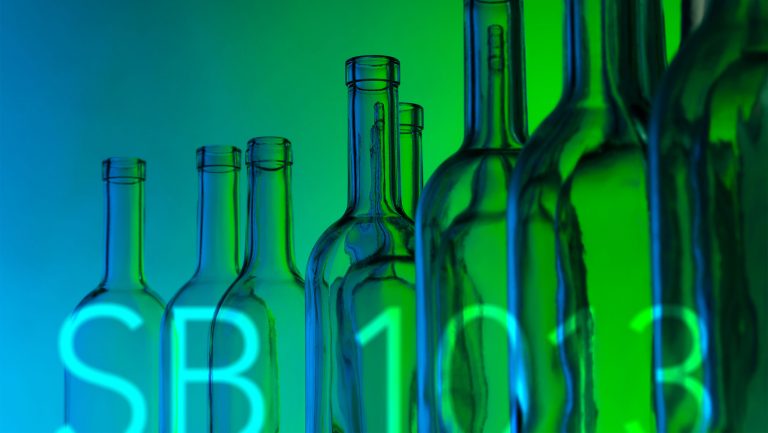Despite extended drought throughout the year, the 2022 harvest went well for Austria’s vintners, resulting in a volume of 2.5 million hectoliters, which is two percent above the five-year average. Although the good harvest could be cause for celebration, the mood was not jubilant everywhere in the country. For some in the Wachau’s wine industry, proposed EU regulations are seen as a threat to their livelihood.
As part of its Green Deal in June 2022, the EU Commission published a proposal to initiate the transition to a fair, resilient, and species-friendly agriculture system. Measures include a total ban on pesticide use as protection for sensitive areas, halving pesticide use and risks, and expanding organic farming to 25 percent of agricultural land by 2030.
In Lower Austria, Wachau’s winegrowers would feel the effects, as the World Heritage region, about 80 kilometers west of Vienna, is part of the Europe-wide network of protected areas called Natura 2000. With 1,323 hectares, amounting to only three percent of Austria’s total vineyard area, Wachau isn’t a large production region, but the narrow Danube valley with steep terraces is globally renowned for growing award-winning white wines such as Grüner Veltliner and Riesling. Though parts of other Austrian winegrowing regions are classified as Natura 2000 and would feel the impact too, the Wachau’s unique growing conditions puts it in particular straits.

Don’t miss the latest drinks industry news and insights. Sign up for our award-winning newsletters and get insider intel, resources, and trends delivered to your inbox every week.
A Pushback to the Proposal
The Austrian EU member of parliament Alexander Bernhuber described the general ban in Natura 2000 areas as “highly problematic,” according to a national newspaper report, pronouncing that Wachau wine companies would be threatened with closure by 2025. This apprehension was also shared by Reinhard Zöchmann, the president of the Lower Austria Winegrowers’ Association, who claimed in a regional paper that “without crop protection, the vines would die and the cultural landscape would disappear.”
Roland Müksch, the owner of the two-hectare, boutique winery Domäne Roland Chan, understands their reticence. “There is indeed opposition from some winemaker colleagues, driven sometimes by a conservative reluctance for change, but often also by limitations of resources and manpower,” he says.
Most vineyard owners in the region are small-scale and family run, Müksch explains, selling their wine at a lower price point, which doesn’t necessarily take into account the actual hours of work. “Any increase in work required without changes in their sales channels would therefore make their livelihood impossible,” he says, adding that an increasing number of vineyard owners are exiting the business because of the already tough conditions, which would be exacerbated by the forthcoming regulation.
This doesn’t, however, mean that Müksch, whose primary career is in investment banking, is against the proposal. “The required transition is possible and necessary, but will require price points for wine that represent the actual cost reality to be economically sustainable,” he says.
While the proposed ban poses a potential challenge to the survival of many winemakers, there is also opposition to another existential threat: the damage pesticides cause to people and nature.
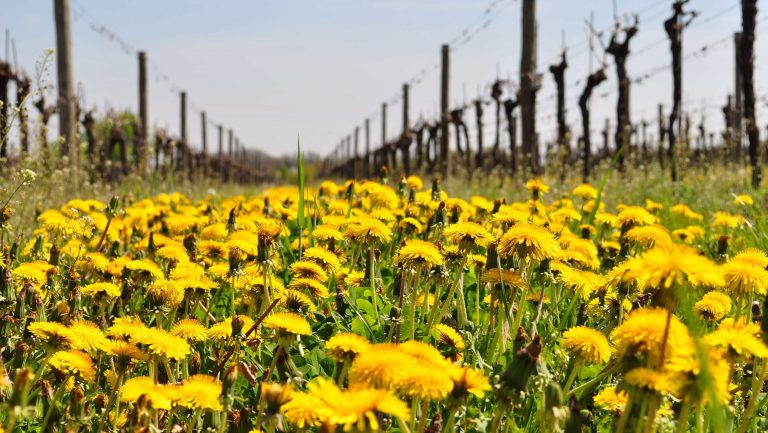
A Debate Over Pesticides’ Place in Viticulture
According to a national feasibility study on a glyphosate exit conducted by the University of Natural Resources and Life Sciences, many vintners relay positive experiences using herbicides containing glyphosate in viticulture. Besides reducing costs and labor, a unique effect against weeds and an uncomplicated application are seen as advantages. To its proponents, glyphosate is an essential tool for cultivating vineyards on terraces and slopes—one of the challenging aspects of Wachau viticulture, requiring largely laborious manual work.
The stone walls that border each terrace require complex care and maintenance, and yet are essential for thriving vines, as they prevent the erosion of the very thin and very fertile humus layer. Compared to mechanical measures, some winegrowers see no risk of stick injuries when using glyphosate herbicides. Most vintners interviewed for this study negated the health and environmental risks.
“The required transition is possible and necessary, but will require price points for wine that represent the actual cost reality to be economically sustainable.” – Roland Müksch, Domäne Roland Chan
This is a view Helmut Burtscher-Schaden, an environmental campaigner at Global 2000, an independent Austrian nonprofit, doesn’t share. “I believe that there is no alternative to the ambition to reduce the risks and use of pesticides,” says Burtscher-Schaden.
He and his colleagues at GLOBAL 2000 unravel the perils of pesticides in Pestizidatlas 2022, a publication reporting on toxins in agriculture, highlighting that 385 million people worldwide suffer from pesticide poisoning yearly.
The paper also reveals that of the over 13,000 tons of pesticides applied in Austria in 2020, nearly 6,000 tons contained active ingredients. Twenty-nine of these are believed to be carcinogenic, harmful to fertility and sexual function, or suspected of triggering gene mutations. Ninety-three permitted pesticides are acutely or chronically highly toxic to aquatic organisms.
“Continuing to use these system-breaking tools to keep a broken system alive only leads us into this downward spiral, and there is no chance of progressing toward sustainability,” says Burtscher-Schaden.
A Paradigm Shift Toward Organic Vineyards
Despite all the challenges, Müksch already sees a paradigm shift in the attitude, approach, and future vision for viticulture among the Wachau vintners. “The long-held belief that a deviation from conventional viticulture was not possible in our region, due to the additional work that our drywall terraces require and the small-scale ownership of wineries, has successfully been challenged by both pioneers in this field and demand from export markets and consumers,” says Müksch.
The numbers confirm Müksch’s statement: In Lower Austria, home of Wachau, organic vineyards increased within 20 years more than tenfold from 432 hectares in 2000 to 5,874 hectares in 2022, accounting for 59 percent of Austria’s total organic vineyard area. The number of certified sustainable vineyards in the Wachau grew within a year by 9.5 percent to 510 hectares in 2021.
Christine Saahs and her family are amongst those pioneers and are taking it to the next level by embracing biodynamic agriculture. Before handing over the reins to her son, Saahs managed one of Austria’s oldest wineries, Nikolaihof. It is also one of the first in the world to have begun working in accordance with the regulations of the Demeter Association, using no herbicides, fertilizers, pesticides, or synthetic sprays in the vineyards.
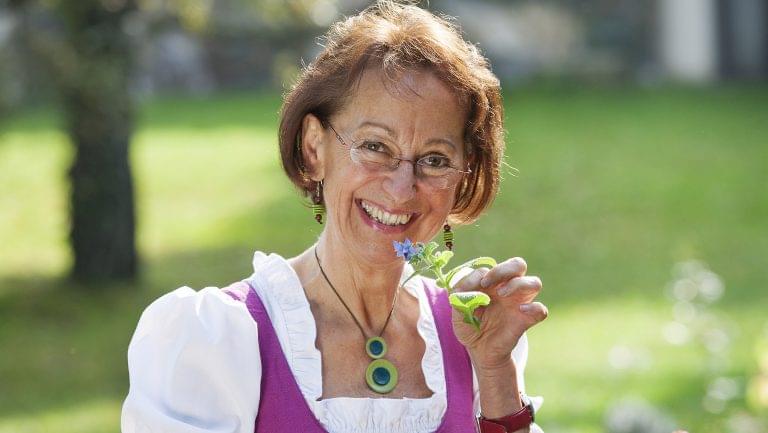
“We knew that the future of agriculture is without toxins and chemicals,” says Saahs, reflecting on the biodynamic beginnings in the 1970s. Success proved the family right—they grew their vineyards to 22 hectares, and Nikolaihof exports 80 percent of its wines to 46 countries, with the U.S. its largest market.
“Remember 2014?” asks Saahs. “It was the year of constant rainfall from spring to fall. Colleagues lost 50 percent or more of the harvest because everything rotted. We didn’t lose a single berry.” She notes that pesticides reduce the natural defenses of the vine, including against rotting.
Seeking Alternative Solutions
Not all winegrowers want to go biodynamic. However, there are alternatives, such as newly bred, hybrid grape varieties which are largely resistant to fungal diseases and thus require less crop protection. These so-called “PIWI” grapes, though, are neither a large-scale nor a quick solution.
“If you have two hectares of vineyards to plant, and you’d like to use PIWIs … bad luck,” says Ottmar Baus, DI, a professor at the Institute for Phytomedicine in Geisenheim, Germany. “PIWIs are neither available nor refined in sufficient quantities.” According to Baus, a complete conversion to fungal-resistant grapes, or at least in the sensitive areas, would take at least 25 years.
Meanwhile, researchers are looking at alternative weed control methods in permanent crops such as orchards and vineyards. They’re working on developing and testing a sprayable mulch film made from renewable raw materials. So far, selected natural substances have been tested in the greenhouse and a field trial in 2021, with more tests scheduled.
Vintners are looking at both traditional and cutting-edge ways to protect their grapes. “At Domäne Roland Chan, we have always taken an approach that deeply respects nature. We maintain and construct the traditional dry walls for their terraces, providing a natural habitat for local fauna and flora. Pheromone traps are used to monitor target pests [and] to detect an infestation before it occurs,” says Müksch.

“This year, we’ll start spraying our steepest vineyards organically with drones,” he adds. “It reduces manual labor despite the required higher spraying frequency, enabling us to convert to organic viticulture in all our vineyards.”
But for now, sit and wait is the motto on the policy side, as the suggested regulation is under review. The reform proposal is under fierce attack by 10 member states including Austria, Bulgaria, Hungary, Estonia, Latvia, Malta, Poland, Rumania, Slovenia, and Slovakia, demanding further impact assessments to be made which could postpone the adoption by months.
The Wachau winegrowers will know more about their future in October when the vote on the draft law to reduce pesticides will take place in the plenary session of the EU Parliament. In the face of potentially serious changes, however, Saahs recommends her guiding life-changing principle as a vintner: “Don’t be afraid.”

Dispatch
Sign up for our award-winning newsletter
Don’t miss the latest drinks industry news and insights—delivered to your inbox every week.
Petra Loho is an Austria-based freelance journalist who has lived and worked on three continents. She writes about art, architecture and wine. Her words have appeared in Metropolis magazine, Wallpaper*, CNBC, Lonely Planet, and many more publications. Living in The Weinviertel (“wine quarter”), she enjoys a crisp glass of white wine.


